In addition to the tramway, the Jokeri Light Rail project involves the building of many other things. One significant and quite prominent area consists of bridges and special structures. Special structures include elements such as support walls and some of the tunnel work. The special structure builders’ craft can also be seen along the light rail line between Keilaniemi and Itäkeskus in the foundations of several electricity supply stations, as well as in Leppävaara in the 850 m2 canopy structure built over Alberganpromenadi next to the shopping centre and pile slabs built under the streets.
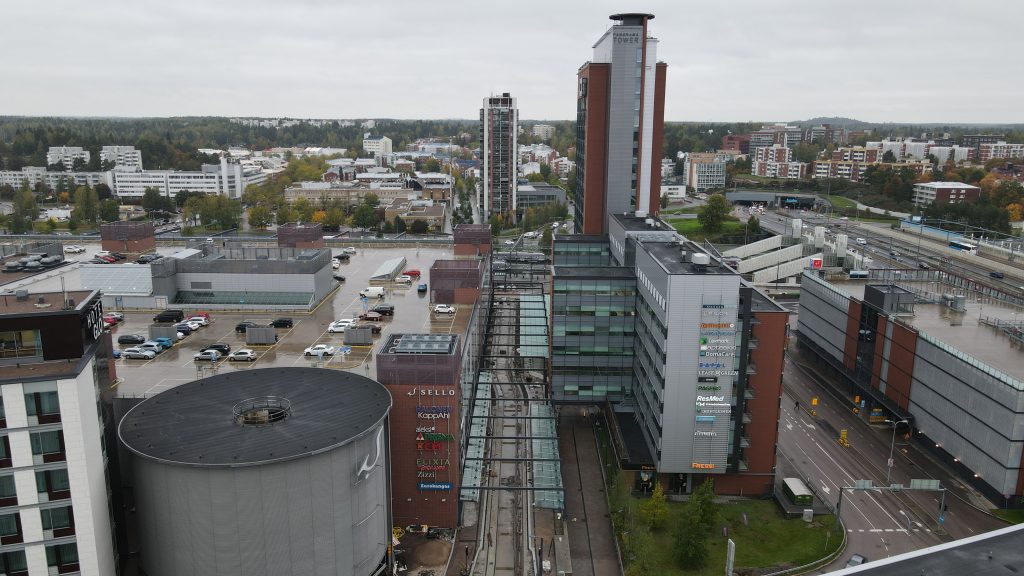
Bridges as major concrete casting sites
11 new bridges have been built and 9 bridge renovations of varying scales have been carried out along the Jokeri Light Rail line. Three of the bridge renovation jobs have also involved widening the bridges. In total, there are 32 bridges along the Jokeri Light Rail line.
The bridges and other special structures have involved a great number of concrete casting jobs. By the end of 2021, the jobs have required a total of around 30,000 cubic metres or roughly 3,750 truck loads of concrete. If this amount of concrete was cast into one cube, its dimensions would be 31 metres x 31 metres x 31 metres. The largest casting sites along the Jokeri Light Rail line have been Impilahdensilta bridge, which crosses Turunväylä in Espoo, the bridges over Vantaanjoki river and the Lahdenväylä bridge in Helsinki. In terms of mass, the largest casting jobs this far have been carried out on the Patterimäki tunnel openings in Pajamäki, and the casting job have been carried out in several parts.
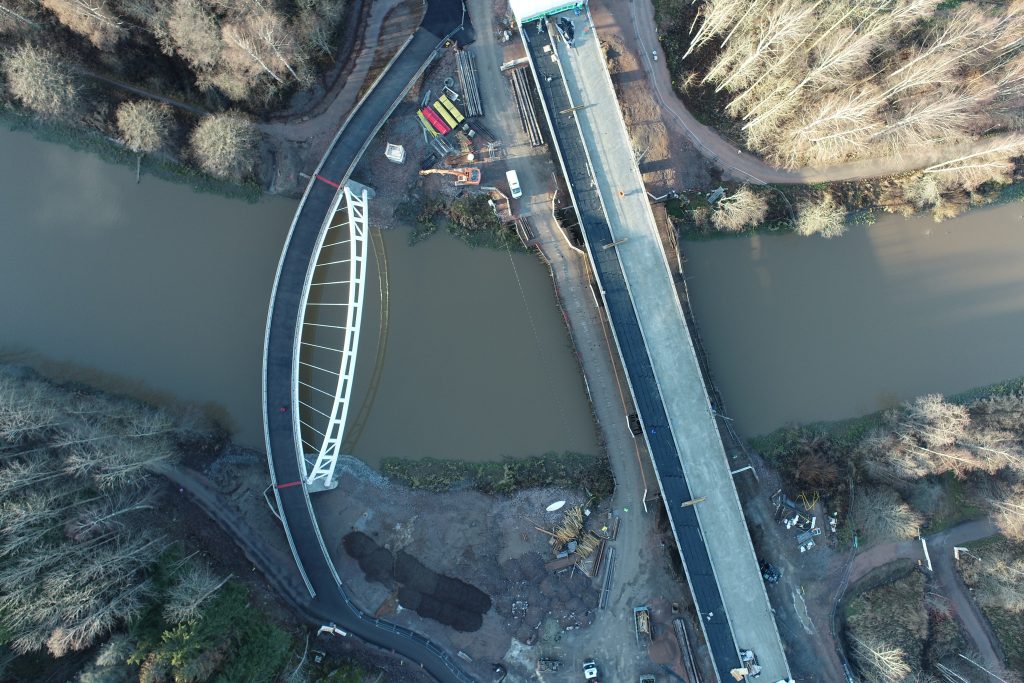
Pile slabs and support walls
Pile slabs have been built at several different sites. A pile slab is a unified reinforced concrete slab built on piles. Pile slabs are used as a foundation reinforcement method in soft areas, for example. Pile slabs are suitable for sites such as soft ground areas, bridge embankments and locations with structures susceptible to vibration nearby. One purpose for pile slabs is to isolate vibration caused by tram traffic.
All of the pile slabs built along the line are located on the Helsinki side of the border: on Takkatie, Pirkkolantie, Maaherrantie, Viikinkaari and Varikkotie. For example, the Viikinkaari pile slab contains 11.7 kilometres of steel pipe piles, the total length of with is equal to the distance from Viikinkaari to Helsinki Central Station.
A total of 17 support walls have been built along the line. A support wall is a structure used for evening out ground level height differences when ground ramps cannot be or are not used. Still a work in progress, the support walls are located at both ends of the line, in Keilaniemi and Itäkeskus. The support wall located at the temporary Itäkeskus terminus is also the largest of the support walls built along the Jokeri Light Rail line.
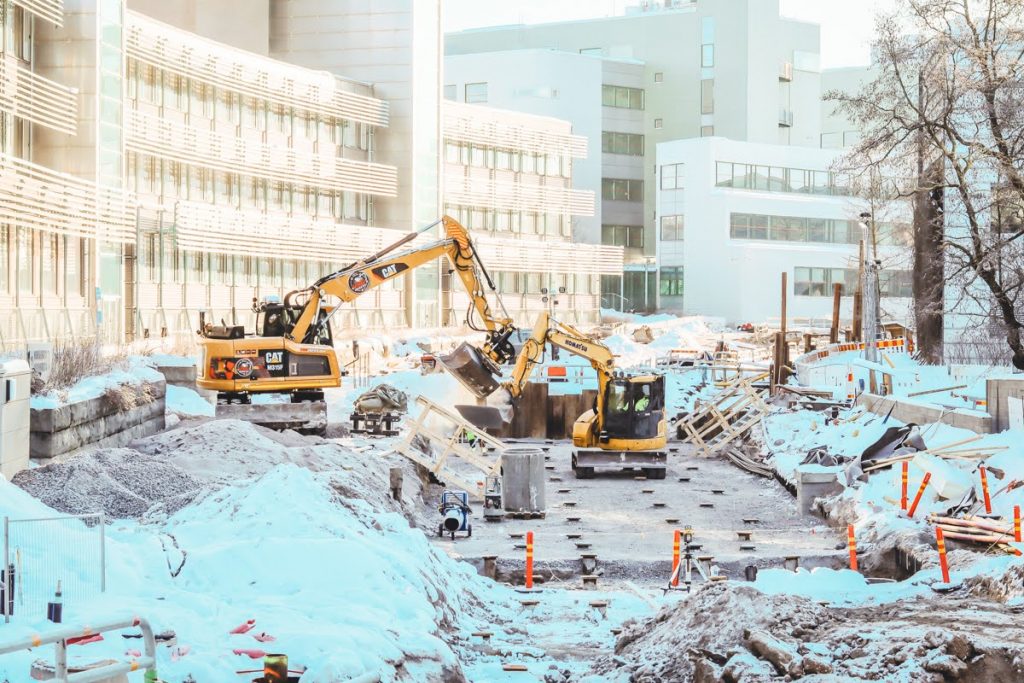
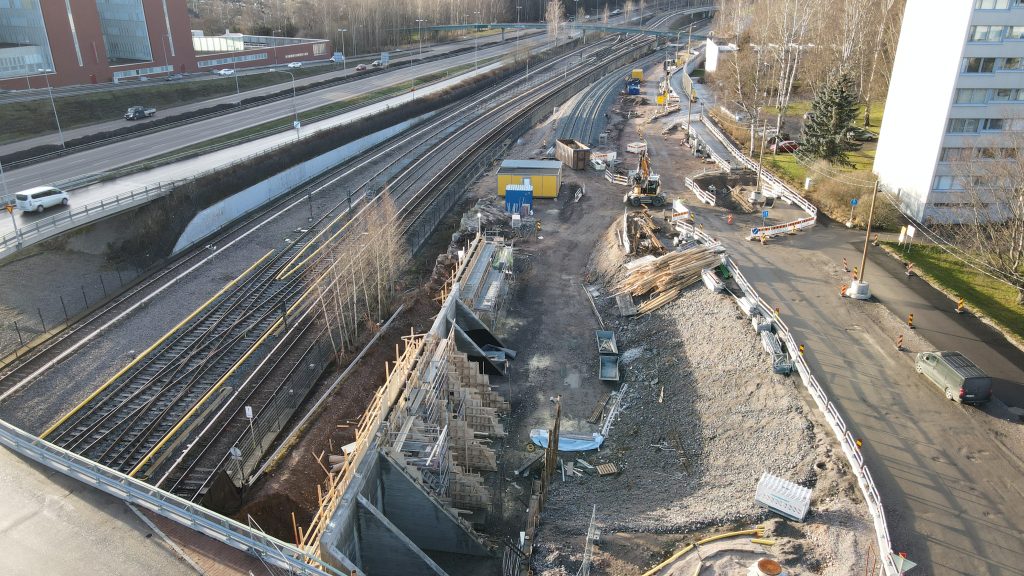
Widening of the Huopalahti concrete tunnel and extensions to the Patterimäki rock tunnel
Widening the Huopalahti station underpass to suit tram traffic as well was a challenging undertaking for the special structure group, as the tunnel structure going under the Huopalahti station was widened by more than 27 metres. The work required plenty of coordination with other working groups of the area, such as earthworks, track and electricity workers.
The concrete extensions to the Patterimäki rock tunnel were also built by the special structure group. From Patterimäki, the concrete tunnel goes around 60 metres to the east and 10 metres to the west. The construction of the concrete tunnels was made challenging by the massive concrete structures, the drying temperature of which was controlled through water cooling. This method ensured that the concrete and the job itself are of a high level of quality.

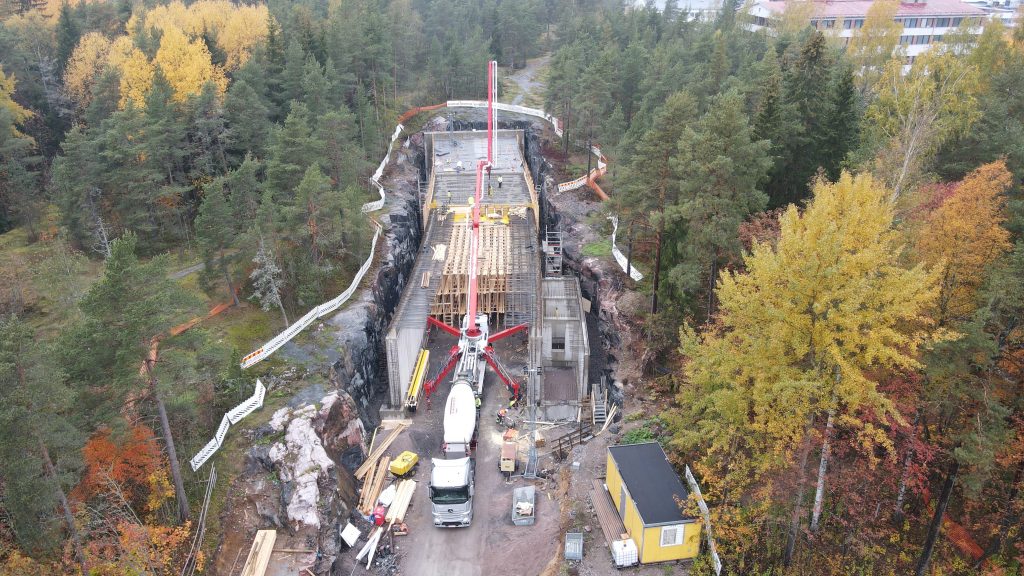
Landbridge and groundwater trough solving challenges on Varikkotie
There are a couple of special structure construction specialties in Itäkeskus along Varikkotie. The soft ground along Varikkotie has set a variety of challenges for construction.
For example, the foundations of the metro railway bridge located on Varikkotie cannot be stressed with the structures of the light rail, so an underground bridge was built across the concrete pile bases and pile fields. The 70-metre landbridge is located in the immediate vicinity of a more than 200 metres long groundwater trough. The groundwater trough was built in order to have the tramway low enough for the metro bridge underpasses without lowering the groundwater level. If the groundwater level was lowered, it could have an adverse effect on the metro track built on wooden piles.
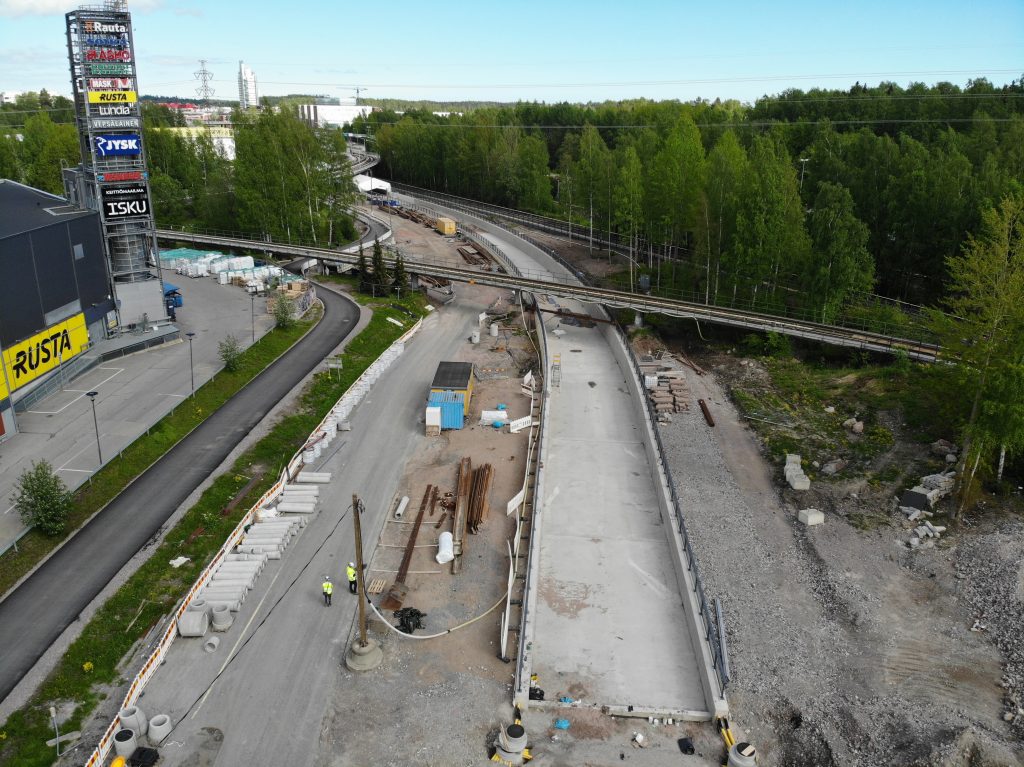
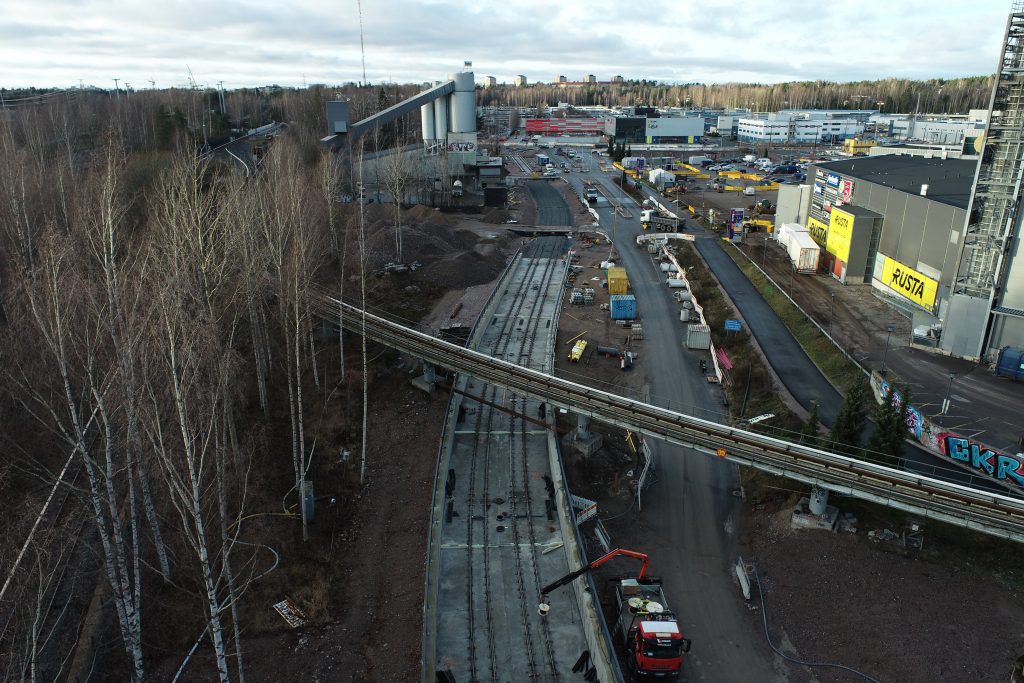
The special structure work has made good progress, and the objective is for the work to be completed by the end of summer 2022.
